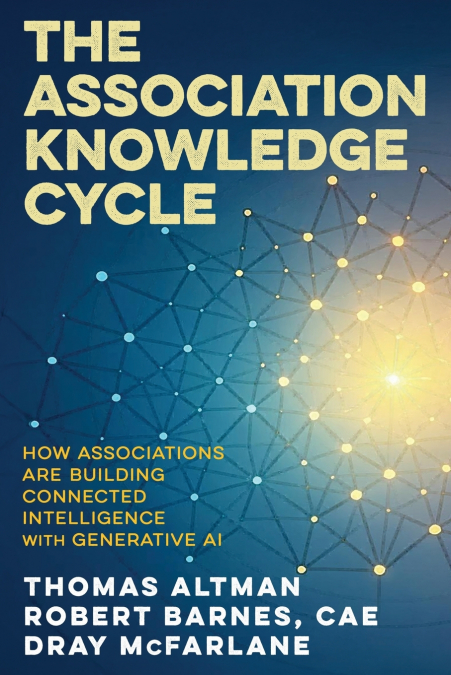
Dray McFarlane / Robert M Barnes / Thomas Altman
The Association Knowledge CycleIf you’ve picked up this book, you’re probably facing the same questions we were: How do associations thrive in an increasingly connected world? What role does artificial intelligence play? And perhaps most importantly, how do we turn all this technological potential into real value for our members?We wrote this book to explore those questions, but we did something unusual in the process. We didn’t just write about AI and connected intelligence. We used AI as our writing partner, creating the very connections we advocate for throughout these pages. You’ll find the full story of that collaboration in the epilogue, but we mention it here because it shaped everything about how this book works.Here’s what we discovered: the most interesting insights don’t come from AI alone or human expertise alone. They emerge from the connections between them. The same principle applies to associations. Value doesn’t live in isolated databases, individual departments, or standalone programs. It emerges when you connect these elements in new ways.That insight shaped how we structured this book. Instead of a linear path from chapter one to the end, we’ve created something more like a network.Each chapter stands on its own as a complete exploration of a topic. You can start wherever your current challenges are most pressing. Whatever you’re grappling with right now, there’s likely a chapter that speaks to it. But here’s where it gets interesting. While each chapter works independently, they’re designed to connect and build on each other. Concepts from one area might spark unexpected applications in another. Ideas that seem specific to one challenge often reveal broader principles. These connections aren’t accidents. They’re invitations to think differently about your association’s potential.We call this framework The Association Knowledge Cycle, and it’s built on the idea that knowledge becomes more valuable when it flows and connects rather than sits in silos. The same AI tools that helped us see new connections in our writing can help associations discover new connections in their operations, their data, and their communities.So how should you read this book? However works best for you. Some readers will want to go cover to cover, building a comprehensive understanding of how AI and associations can work together. Others will use it as a reference, pulling specific chapters as needs arise. You might read one chapter this week, then come back to explore another topic next month. There’s no wrong way to approach it. What matters is that you use these ideas to create something new. Take our frameworks and adapt them. Challenge our assumptions. Connect concepts from different chapters in ways we never imagined. The real value isn’t in following our prescriptions exactly. It’s in using these ideas as a springboard for your own innovations.Whether you’re an executive director looking to transform your organization, a membership director exploring new engagement strategies, or a technology leader trying to make sense of AI’s potential, we’ve written this book for you. Not as a definitive guide, but as a collaborative exploration.Think of us as colleagues sharing what we’ve learned, hoping it helps you discover what’s possible for your association. The future of associations isn’t about choosing between human insight and artificial intelligence. It’s about creating new forms of connected intelligence that amplify both. We hope this book helps you build those connections.